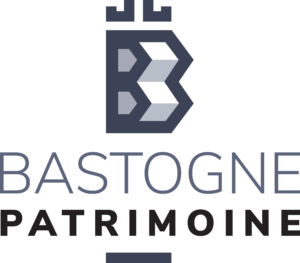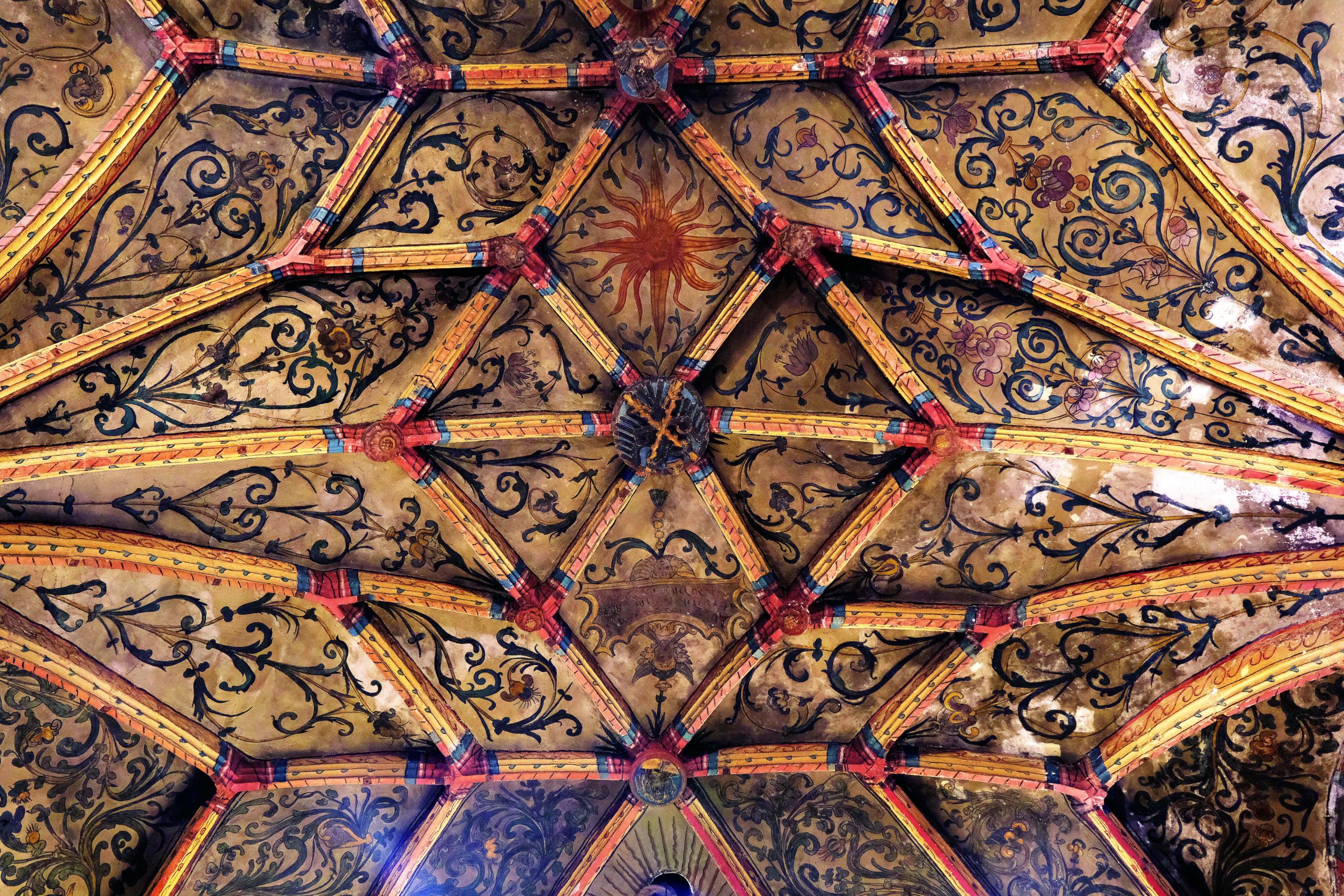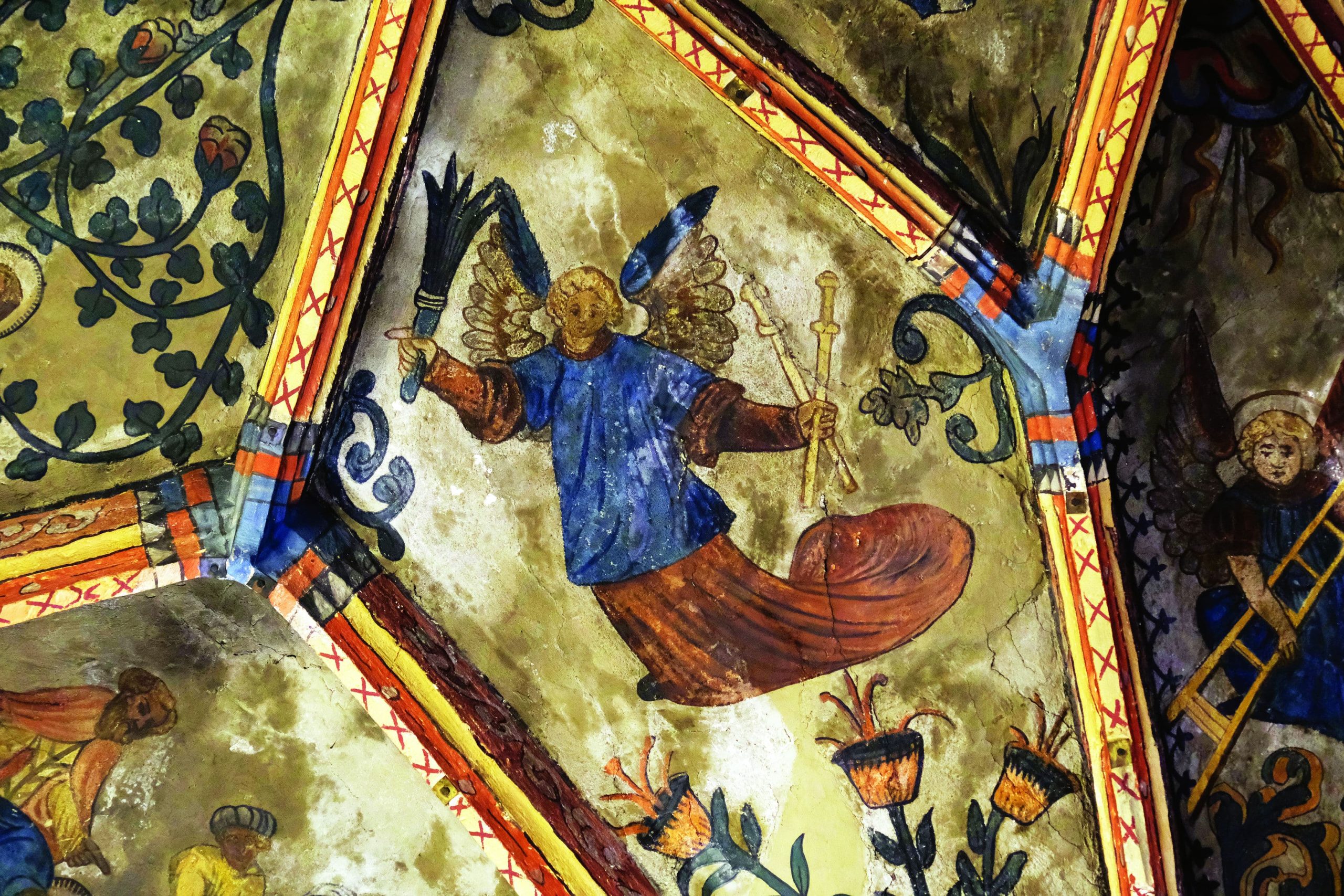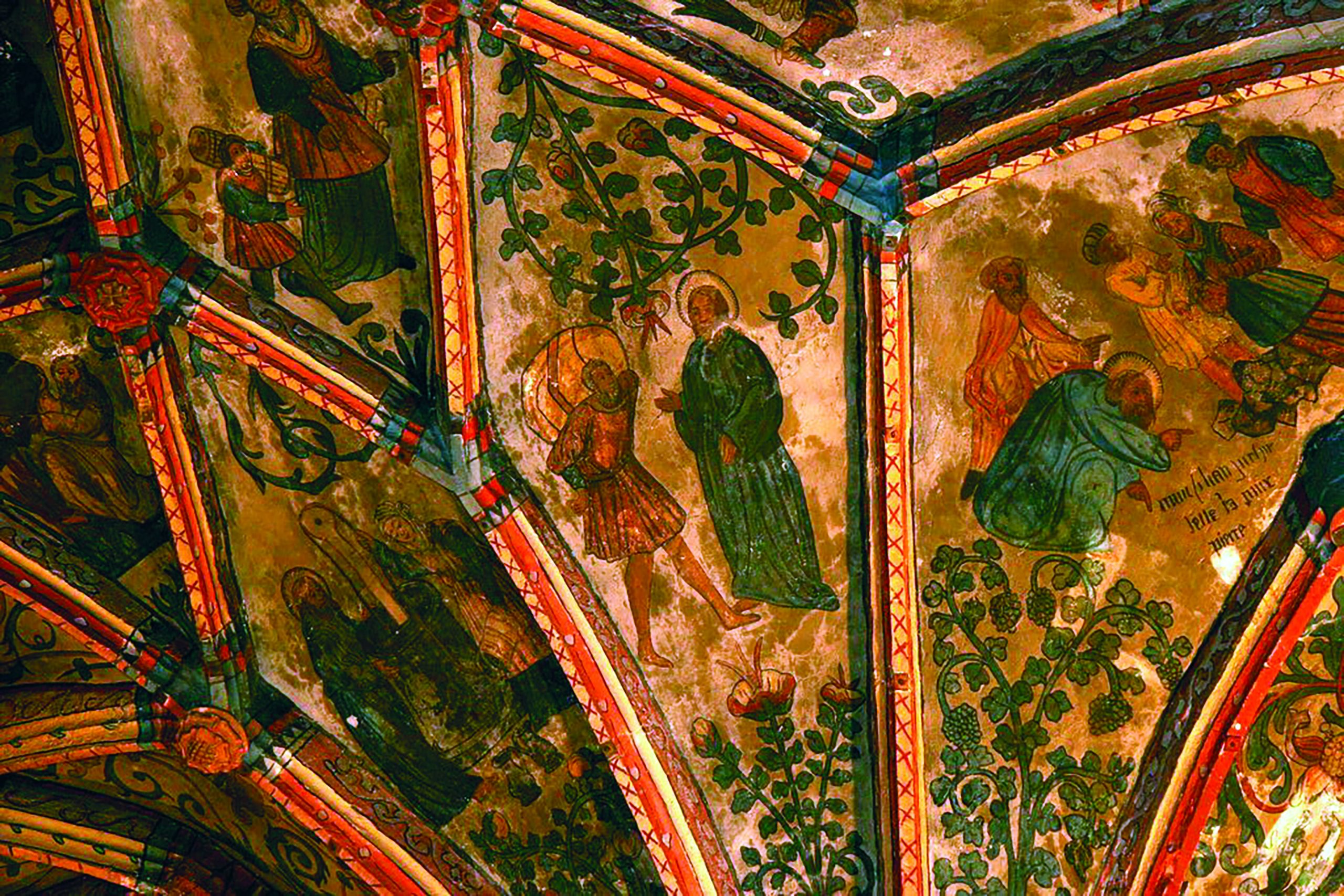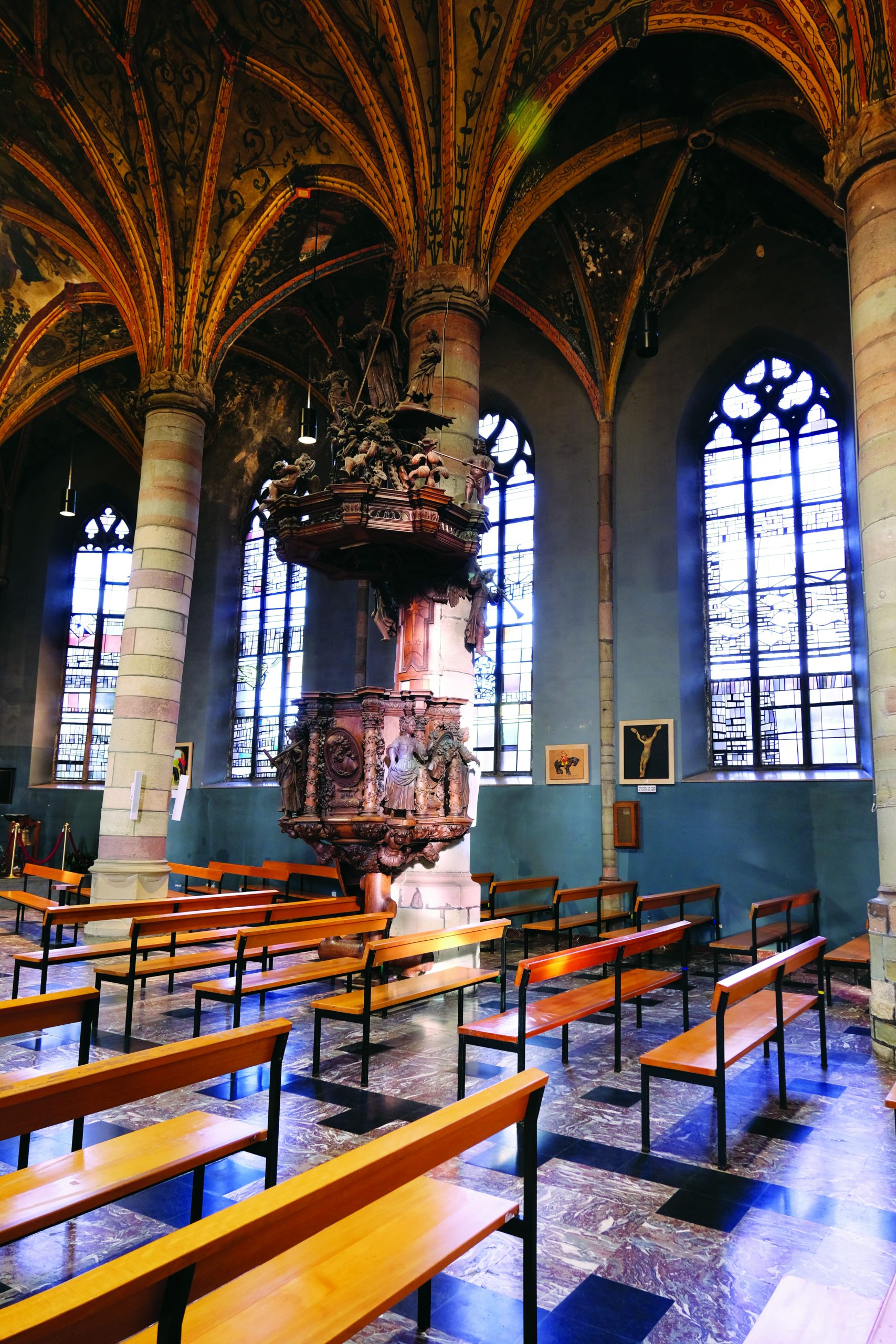L’avenir de la voûte
En 2018, la Commune de Bastogne a sollicité Madame Bertrand, reconnue nationalement pour ses compétences dans le domaine de la conservation et la restauration des peintures murales, afin d’étudier les possibilités d’interventions pour restaurer la voûte de l’église.
L’étude révèle qu’il n’existe plus ou peu de peintures originales du 16e siècle. Dans le chœur, plusieurs laits de chaux et des peintures plus récentes (des 19e et 20e siècles) recouvrent les anciens décors. Dans le reste du bâtiment, de nombreuses retouches ont été réalisées au fil des ans. Les matières picturales des 16e, 19e et 20e siècles y sont confondues, et il n’est plus possible à l’heure actuelle de les séparer.
Parallèlement à l’analyse de l’expression artistique, l’étude a mis en exergue des problèmes structurels, comme de mauvaises conditions du climat intérieur de l’église, notamment, qui dégradent les peintures.
La restauration de la voûte, n’étant plus dotée de sa valeur originelle, s’avère donc extrêmement complexe et conséquente, et doit également s’envisager de plusieurs manières, selon l’état des voutains à préserver.
L’édifice étant classé au Patrimoine à titre exceptionnel, toute modification nécessite au préalable l’accord de l’Agence Wallonne du Patrimoine. La Commune de Bastogne a donc introduit un dossier à l’institution afin qu’elle accompagne et soutienne financièrement les aménagements à réaliser à l’avenir pour redonner à la voûte son éclat, mais aussi pour moderniser le chauffage de l’église, afin d’y maintenir un environnement adéquat pour la préservation des peintures…
De toekomst van het gewelf
In 2018 contacteerde de gemeente Bastogne Mevr. Bertrand, die nationale erkenning geniet voor haar expertise in het behoud en de restauratie van muurschilderingen, om de mogelijkheden te bestuderen om het gewelf van de kerk te restaureren.
Uit de studie bleek dat er weinig of geen oorspronkelijke 16e-eeuwse schilderingen meer zijn. In het koor bedekken verschillende witten en recentere schilderingen (uit de 19e en 20e eeuw) de oude versieringen. In de rest van het gebouw zijn in de loop der jaren talrijke retouches uitgevoerd. De 16e-, 19e- en 20e-eeuwse verfmaterialen zijn dus met elkaar vermengd en kunnen niet meer van elkaar worden gescheiden.
Naast de analyse van de artistieke expressie heeft het onderzoek ook structurele problemen aan het licht gebracht, zoals het ronduit slechte binnenklimaat van de kerk, dat de schilderingen zwaar heeft aangetast.
Gezien men de oorspronkelijke waarde van het gewelf niet heeft kunnen vrijwaren, belooft de restauratie ervan uiterst complex en ingrijpend te worden, temeer ze op verschillende manieren moet worden aangepakt, afhankelijk van de staat van de te behouden gewelven.
Aangezien het gebouw geklasseerd is als uitzonderlijk erfgoed, is voor elke wijziging de voorafgaande toestemming van de Waalse erfgoedinstelling vereist. De gemeente Bastogne heeft dus een dossier ingediend bij deze instelling, zodat ze de toekomstige wijzigingen kan begeleiden en financieel ondersteunen om het gewelf in zijn oude glorie te herstellen, maar ook om het verwarmingssysteem van de kerk te moderniseren, om een omgeving te behouden die geschikt is voor het behoud van de schilderijen.
The future of the vault
In 2018, the municipality of Bastogne asked Mrs Bertrand, who is known nationwide for her expertise in the field of conservation and restoration of wall paintings, to study the possibility of interventions that could restore the vault of the church.
The study, however, revealed that there are few or no original 16th century paintings left. In the choir, several whitewashes and more recent paintings (from the 19th and 20th centuries) cover the old decorations. In the rest of the building, numerous touch-ups have been made over the years. The pictorial materials of the 16th-, 19th- and 20th centuries are confused, and it is no longer possible to separate them.
In addition to the analysis of the artistic expression, the study also revealed structural problems, such as the poor climatic conditions inside the church, which degrade the paintings.
The restoration of the vault, now no longer endowed with its original value, is therefore proves extremely complex and consequential, needs to be envisaged in several ways, depending on the state of the vaults to be preserved.
As the building is classified as an exceptional heritage site, any modification requires the prior agreement of the Walloon Heritage Agency. The municipality of Bastogne has therefore submitted a project to the Agency so that it can accompany and financially support the changes to be made in the future restoration of the vault’s former glory and modernisation of the church’s heating system, in order to maintain a climatic environment, suitable for the preservation of the paintings.
